Should physics theories be tested – or just accepted? So asks essay the in New York Times
Adam Frank and Marcelo Gleiser discuss whether Physics has moved beyond the need to be checked. Their essay (Sunday New York Times 2015-Jun-7) is on science vs empirical evidence (experimental verification)
“Today our most ambitious science can seem at odds with the empirical methodology that has historically given the field its credibility”
“How did we get to this impasse?” they ask. Then they discuss the Higgs particle that generates a core part of any particle’s mass. It was predicted 50 years ago and measured last year.
The Higgs is the “lynchpin of … the Standard Model” of particle physics, a powerful mathematical theory that is known to contain problems, but can not be extended. New theories have elegant math, are each hailed as “the” organizing principle of the universe, but have not predicted anything new. Are our standards for science changing?
This discussion makes me think. A proposed change to our accepted models in physics is usually an elegant reformulation. There are 3 ways a change can work out:
- New correction to known stuff that turns out right – tests validate predictions.
Example: Neutrino theory explanation for beta decay. - Alternate explanation of known stuff – A different but not “better” viewpoint.
Example: Schrodinger waves vs. Heisenberg probability matrices - False explanation of known stuff – Sounds good, fails tests, must be discarded.
Example: Brans-Dicke scalar-tensor replacement of general relativity theory
To decide among the 3 outcomes, we have to test the proposal with measurements. All eyes are on the golden #1 – your name in history + the gold Nobel medal.
So we keep testing, perhaps for decades or centuries, to reach conclusion 1, 2 or 3 for the candidate model. Anything else would be accepting magic or theology.
My personal background in Magic Science. F&G’s essay points out that “hard” sciences (physics and chemistry) have been been undergoing an amazing internal churning in how to accept proposals. I have seen this unfold, too.
- As an undergraduate, I recall a chemistry prof who told me there was no reason to his science, it was a construct of the mind that helped us mentally piece together what we experienced. But it had no reality, no Truth.
- As a graduate student, I remember one of our professors responding to someone’s Wonderful Theory – about the truth of magnetism, as I recall. He got tangled in the mess like Bre’r Rabbit with Tar Baby. (Disney’s Song of The South had many things in its favor; but some negatives, too.)
- Shortly after that, I heard of Eugene Wigner’s 1960 comment about the mysterious usefulness of math in science. An excerpt –
“the enormous usefulness of mathematics in the natural sciences is something bordering on the mysterious and that there is no rational explanation for it.” — E. Wigner
Wigner was one of the physics giants in the mid 20th century. He was born in Hungary and came to America mid 1930s to escape the Nazi insanities. His pictures show a gray man, even when young. Fig 2 is his signature almost-smile. Personally daunting? Maybe not, he influenced the physicists of his day.
No rational explanation for mathematics in the physical world? When a person of this stature says this, it ignites the emotional equivalent of an A Bomb. sheesh… I hope Wigner had a background meaning to the comment which does not come across in his words. Frank & Gleiser discusses the intellectual churning in the science community. Wigner’s comment was like pouring gasoline on a grass fire.
Fruit and Nuts — and pseudoscience.
I have kept a file with this title since I was an undergraduate. What goes into it are unreal proposals about how the world works…
- Clippings about Velikovsky – astronomy that couldn’t happen, von Daniken – space aliens playing god, and many others. One tip-off from a quick scan of a page, does it make 5 or 6 shocking claims every page (as in vD’s book)?
- Ads claiming new marvelous Physics that the Establishment wants to hide? As in a recent New York Times (printed copy, 2015 Jun 09, page D3, Science Times). Red flag alert: “Lorentz’s Transformation … is Mathematically Right but Physically Wrong.” Too Many CAPITALIZATIONS, That DO Not Belong IN the Text. I call text writers who do this “screamers,” and it is another hint of bogus claims.
- What about Wigner’s mysterious mathematics? Would it belong in my F&N folder? If it were Wigner’s woo-woo magic, yes it would. Without the math tool, How could you evaluate Velicovsky and von Daniken? And check the uncountable number who continuously pop up and off?
Mathematics is “automatic logic.” Mathematics is a unified structure, built like a ladder. It is perfectly possible to climb up as high as is desired, but step firmly on the lowest rung first, then raise yourself to the next one up. At every step, rising safely to the next step requires that you are firmly are footed on your current step.
In America, many students never learned what the basic operations like multiplication and its opposite, division. They have nowhere to stand to begin the climb; so “math is hard.” We discuss this in much better detail in Appendix 1, following our standard sign-off.
Math seems hard because they did not get the full understanding of the starting points. But its application of logic needs no additional cogitation to reach an answer.
Automatic logic what you use in physics to say it takes a bit over 0.78 seconds for something to drop 3 meters in a vacuum under standard Earth gravity. Load the distance (3 m) and acceleration (9.81 m/s2) into the automatic logic and get the answer. We don’t talk about what each step does, because if the algebra is done right the answer automatically flows from the input.
Wish we could do politics the way we use math. Start with your assumptions (I want my country to work well), apply the automatic logic, and you get X for the next leader. Instead we decide using verbal mush.
Answer to Dr. Wigner: By saying we can use math to understand the world, we mean the world operates in an understandable way. The true woo-woo magic would be if it did not operate in a way we could understand.
Frank and Gleiser’s examples.
F&G are right, advanced physics theory is splitting up into separate dogmas that sound almost like religions. Is it loop quantum gravity? String theory with superstrings and multiverses? Supersymmetry and partner particles? These are all attempts to meld quantum theory (accurate for ultra small things) with general relativity (accurate for things monstrously huge and far away). Every attempt to make sense of the universe is required to develop its own automatic logic extension (math) and each is intensely beautiful to the cognoscenti.
Do modern quantum and cosmological models need to be verified? Isn’t it enough that they exist as beautiful constructs concerning the universe? No. Being beautiful is not enough.
F&G point out that some current physicists refuse to accept data agreement as the ultimate test. Multiple universes are one case in point. We cannot detect them, but a void does not disprove anything! The model’s implications –such as explaining the fine structure constant by the anthropic principle– are too intense to ignore. Besides, the internal logic is too beautiful to abandon. So true believers continue to develop implications of their different models; they remain illuminated by theory’s nearly-holy truth.
F&G compare string theory (superstrings and mulitverses) to Ptolemy’s epicycles that described the movement of planets across the sky, could one be as false as the other?
I think epicycle theory is not a good analogy. See the Appendix 2 after our sign-off.
Using modern terms:
Ptolemy’s epicycle math model was the
2nd order perturbation correction 300 years after the
1st order correction to the much older
0th order approximation of a planet’s motion against the stars.
Both corrections used math but without the tools of modern perturbation expansion techniques. One could also compare epicycle models with standard modeling code used in our fastest computers – we discuss this further in our appendix.
I believe that Modern cosmology grew out of the epicycle model using the valid pattern of {data feedback with model} leading to (new-data feedback with new-model}. This is how to do human science. (There were push-back from the then-current establishment people just as there is today, except that today we do not bind innovative people to stakes and burn them alive.)
Trust But Verify
“Math is hard,” yes maybe. But the experimental verification process is also difficult to do and challenging to understand. And both are needed. To respond to Frank & Gleiser:
Twentieth century Physics developed through this continual feedback:
(A) quantum data ⇔ quantum theory,
(B) astronomy data ⇔ relativity theory.
Current unification of relativistic and quantum views will only succeed with similar feedback between the new models and the testing data.
I am pretty sure Frank & Gleiser would not disagree. Certainly you should try for new elegant unification schemes to replace what is know to be flawed. But until experimental verification determines which beautiful model matches the universe, we must treat news of exciting developments as an amusing hypothesis.
Physics really is in danger of becoming scientific theology. Advocates see the beautiful self-consistency of their model and transmogrify into strong ideologues. Must we proclaim conclusion from untested models as revealed Truth? Even the heavily tested General Relativity is still continually being checked by new testing.
There are many different proposals to the “solution” to physics, and, although we cannot yet say which model works, validation tests have no expiration date. After all, there were about 1500 years between the verified Ptolemaic model and the verified Newtonian model.
Update: 2015 Jun 15: Interesting discussion of what LastTechAge calls the “Denominational-ization” of physics. Steven Cornelliussen posted at the Physics Today site on the same Frank and Gleisser New York Times article as we discuss. It is a clear separation from the December essay in Nature by George Ellis and Joe Silk on – Science is what you do when you make testable predictions vs. what happens when you preach speculations as Truth.
……………………………….
Charles J. Armentrout, Ann Arbor
2015 Jun 10
This is listed under General
Have a comment? Click on the title of this post, go to bottom, let us know.
Related posts: Click the INDEX button under the Banner picture
Appendix 1: Why is Maths so hard? (version of this in our PDF file)
This plural “maths” is fairly new to me. I have to ask – why make plural a word that means a unified logical structure, unless you include astrology, tea leaves and palm reading? Should mathematics really be included in the Fruit & Nut section?
Mathematics is not magic, it is logic in rather pure form. We are at risk, here, of sounding like a school class, but we have to deal with Dr. Wigner’s mysterious math.
A nurse is to inject a patient with 25 mg of a medication. She has an 80 mL vial containing 1 gram of dissolved medication. “Ah-Ha, ratio-and-proportion” says she, as she pulls 2 mL into her syringe. At one time, the ability to form ratios seemed to be the peak of intelligence. It was/is Ratio-type thinking, or “rational” thought. (Not mysterious-type, or “mysterinal”.)
Each semester, about half the students entering Intermediate Algebra classes find the following new to them…
Our point ⇒ Every step you take upwards in math reaches a new level in the logic of how things work. Like climbing a ladder, you move to the next step up by standing on the current step.
This sequential learning is the only way to climb to exponential growth, calculus, differential equations, group theory, topology and onwards. It is never any harder to move up the next step, but each climb requires a firm, sold footing on the current step. All the parts of mathematics meld into the beautiful ladder of tree of clear thinking.
Many students never understand basic operations like multiplication and its extension, division. They have nowhere to stand to begin the climb. So, yah, math can be “hard.” Return to Fruit & Nuts
Appendix 2: Epicycles and Math Perturbation Theory
Epicycles accounted for the motion of a planet’s dot of light about the sky. The dot moves along circles that themselves move around larger circles. Start with the largest circle that almost describes the motion, then add the next smaller, then the next. Not just any circles, just those precisely so. Modern folks think this is silly, it sounds clumsy and arbitrary. To me it sounds like an early application of math perturbation methods.
Perturbation Theory A set of mathematical steps that are used for ultra-complicated models like quantum electrodynamics (QED) and the very successful Standard Model of quantum particles.
(a) The variables can be written as a large value and a smaller add-on.
(b) Rewrite master equations using Large+Small form for the variables.
(c) Simplify the main equations by dropping all Small terms.
This last step is called the zero order solution. It is a simple value, not exactly right, but close. It is calculable, which is its advantage. First order correction – add back in the small stuff and, again, drop all but the largest parts of your new form. Do again for second order correction, etc. Each cycle is more complicated and harder to do, but follow perfectly logical steps. Stop when fatigued. The results can be in extremely accurate agreement with the best data. Sometimes this even works when the “small” parts of the variable are not so tiny. Perturbation techniques work for quantum calculations and are respectable, even though it is known that if you carry the expansion too far your answer will start to diverge – approach infinity.
I think that epicycles were an early early efforts to do this, without the automatic logic of modern perturbation techniques.
oth order solution: Planets (from ancient Greek: wandering stars) rotate about Earth and also move against the stellar background at a constant rate ω, measured in degrees/week ( º/wk).
Note, the planets are just bright lights in the sky
Adjustable Constants–2:
radius R and ω º/wk
1st order correction: Some planets like Venus across the sky as with a common stream (prograde motion), but some like Mars occasionally reverse direction for a while.
With the sun as the center of motion, Earth sees the inner planets to always move in the prograde direction; the outer planets will experience both prograde and retrograde motion, Mars shows the largest effects.
Hipparchus (about 150 BC) corrected the oth solution to account for retrograde motion by having the planet rotate in circles (epicycles) about a point that moves along the 0-th model’s path.
Adjustable Constants–4: main radius R, main rotation ω º/wk epicycle radius ρ, and epicycle rotation α º/wk. Feel free to select α as clockwise or counterclockwise motion.
2nd order correction: Planets actually move about the sun in elliptical orbits and do not orbit with at constant speed (they are fastest when they closest to the sun).
Ptlolemy (about 150 AD) added an offset Earth to the center of the main rotation (Earth-eccentric) actually to account for the Earth-Sun distance. Later, to get the non constant speed, he added another distance (Earth-equant) to the point where the epicenter rotates about the system at the constant angular velocity.
Adjustable Constants–6: main radius R, main rotation ω º/wk epicycle radius ρ, and epicycle rotation α º/wk, length E_C, and length E_Q.
Each correction was a “perturbation” because it added small values to the previous solution. Even this was not quite accurate, and later corrections added sequences of ever-smaller epicycles to better approximate an ellipse. Though they never realized they were approaching the shape of a solar-centric ellipse, the old guys used math automatic logic to predict planetary locations, and their numbers matched then-current data.
The 2, 4 and 6 guessed-at parameters in the epicycle models look a lot like modern computer models, from nuclear bomb modeling (LASNEX) to all the weather codes currently in operation. They each contain physics modules that make the predictions, and a bunch of “free” (meaning guessed at) parameters to represent things either not known, or too complicated for detailed modeling.
Epicycle models were not laughable, they were steps forward along the path to modern science!
Fifteen hundred years later, Tycho Brahe’s astonishingly good data provided the evidence that something was wrong with the theory. Johannes Kepler organized it, and Isaac Newton devised a new explanation that produced a highly accurate model and finally changed astrology into modern astronomy. This did not mean the Ptolemy’s epicycles were “wrong,” anymore than Newton’s gravity-based “Laws” were proved “wrong” by Relativity. Both were good for their time, both were replaced by a new model that agreed everything the previous did, but were simpler, made new predictions, and had better accuracy. This is the march of Science. Return to Frank & Gleiser

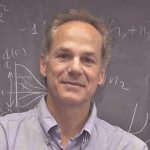






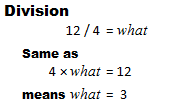
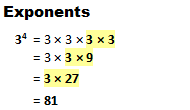
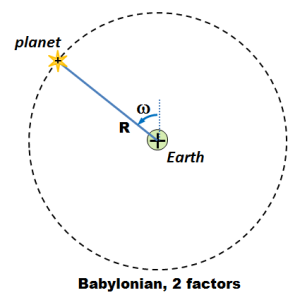
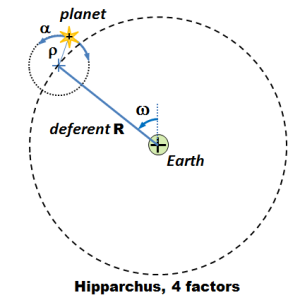
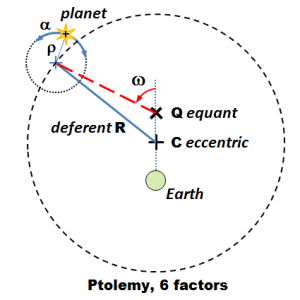
Reblogged this on The Arts Mechanical and commented:
If a hypothesis can’t be checked experimentally, then it can’t be tested and testing is the essence of physics.
LikeLike
Right. If a model cannot be tested today, then it must remain a “tentative hypothesis” until it can be tested. That might require decades or centuries, and this is the open door where discipleship enters – some of these things are truly awesome in scope and implications. Emotionally hard for some to leave in limbo.
LikeLike